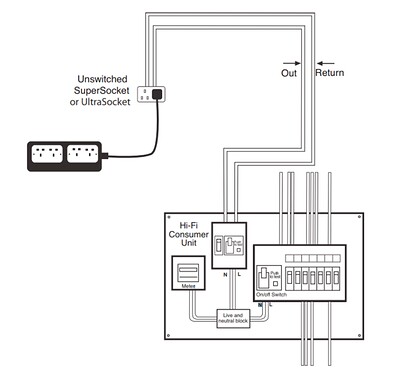Maybe a bit late in the process, but I thought I still add some of my own experience with dedicated mains connections for my audio system.
I have completely refurbished all the technical systems in our current home. This included an electrical heat-pump (well sourced), and extensive PV system and 2 charging connections.
I’m mentioning these explicitly because they all three noticeably affect the audio quality if no measures are taken.
We upgraded from a single phase 35A connection to a 3-phase 40A connection. We did not have the option to leave a 1-phase connection in place in addition to the new one.
I actually doubt if in your case the 1-phase connection is anything else than a split-off from one of the 3 phases entering your premises.
We have split the main incoming 3-phase connection into 4 groups: Solar, Heatpump, Charging and ‘the rest’. In addition to that I’ve made a separate group, directly split after the main disconnector, to feed my audio system. In addition to that we have a ‘regular’ group connected to the location of the audio system. This allows for easy comparison between the two, and splitting my AV equipment from my pure audio parts.
My key challenge was that every time the sun was shining, the car was charging or my heatpump was modulating, the audio quality would noticeably deteriorate. And I mean like walking into the room and thinking ‘what is wrong with my system?’. The all have one thing in common: they use inverter technology to feed or consume high currents into or from the grid. BTW my heat-pump is a Ecoforest one, which I choose specifically for its modulating capacity. There are heat-pumps that simply switch on/off. This high current + inverter technology just pumps heaps of HF noise into the the local grid. This kind of disappears in the all capacitive and inductive load further down the street. But so closely connected to the other equipment in my house it still ‘pollutes’ my power supply to the audio system.
Hence my quest to separate the audio system as much as possible, and as far down as possible in my home system. I’ve done this with the separate audio group which has a few ‘special’ components:
- Hifi-Tuning fuse holder (basically an optimised Siemens Sitor unit) - hardly noticeable impact
- Supra Lo-rad cable from switchboard to wall sockets - clearly noticeable impact
- Furutech wall sockets & plugs on all cables - hardly noticeable impact
- Audioquest Niagara 5000 filter/distributor - significant impact
- Audioquest Monsoon and Blizaard cables - clearly noticeable impact compared with Supra and Audioquest NRG-4
- Separate earthing pin close to the audio system - significant impact
When I say ‘significant impact’ this is clearly very much relative to the other options. It is comparable with upgrading audio cables, but not as big as for example my upgrade from my old Ayre preamp to a new one. Although the impact of the Audioquest Niagara was probably much bigger than I anticipated. In particular when I started to use it with a separate earthing pin and had figured out all the correct plug orientations.
I think that one and the long stretch of Supra cable (about 22m) have been the best investments.
Please note that from a regulatory perspective it might not be allowed to have a separate earthing pin connected in your country. We actually had to do specific earth-resistance measurements to have my installation contractor to sign off on this solution. But this was, in my system, absolutely worthwhile.
Hope this is of some use.
